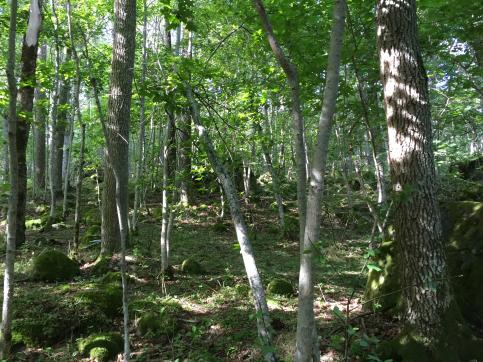Introduction
Background

The broadleaved forest is one of the most species rich habitats in Sweden and also home to many red-listed species. Unfortunately, the amount of broad- leaved deciduous forest has dramatically declined during the last decades. Today, the threats towards broadleaved forests and the species that depend on them are still foremost fragmentation and habitat loss. Another threat is the spread of Dutch elm disease and ash dieback. The rapid spread of the fungi that causes the diseases is of great concern as the outbreak has led to large reductions in the population.
One group that has been especially affected is rare epiphytic lichens as many species are associated with old-growth forests with long stand continuity. Research has shown that management systems are important in order to ensure stand continuity for lichen conservation. When woodland of high biological value becomes overgrown the most common actions in these habitats is free development, reinstated grazing and/or thinning of the tree cover. The latter option has been of large interest in conservation of overgrown broadleaved forests due to the fact that they have a history of being more open. The aim is to open up the strand and promote the survival of the desired tree-species.
Unfortunately, not many large-scale controlled experimental studies have been conducted to evaluate how conservation thinning actually affects different species of rare lichens. The limited reserach that has been done has shown different results. However, there are indications that conservation thinning has a positive effect on some epiphytic lichens.
Aim
This study is based upon a unique opportunity to, with an experimental setup, examine the effects of conservation thinning on a variety of epiphytic red-listed lichen in overgrown broadleaved forests at two sites in Sweden. In total, 652 trees with red-listed epiphytic lichens were found in 2010 before a restoration was conducted. It has now been four years since the restoration and the results of this experimental study will reveal the long-term effects of conservation thinning on those lichens. The results from this study can be used in planning conservation strategies for red-listed epiphytic lichens on broad-leaved trees.
This study will also take the opportunity to investigate if conservation thinning has an impact on Dutch elm disease and ash dieback disease.
The research questions to be answered:
- Do red-listed epiphytic lichens associated with broadleaved forests as a group respond negative or positive towards conservation thinning?
- Which species respond negative, positive or are indifferent?
- How does conservation thinning affect Dutch elm disease and ash dieback disease?
- What species of red-listed epiphytic lichens does Dutch elm disease and ash dieback disease pose a threat to? Are there any possible refugia for the species that are threatened by these diseases?
Responsible for this page:
Director of undergraduate studies Biology
Last updated:
06/15/16
